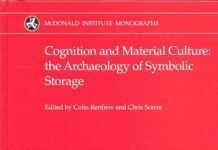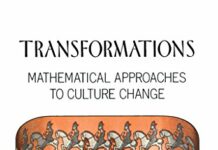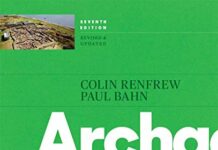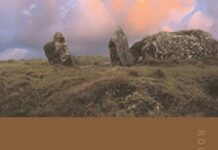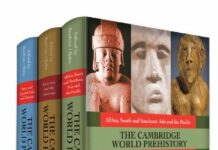
Ebook Info
- Published: 1990
- Number of pages: 368 pages
- Format: PDF
- File Size: 5.14 MB
- Authors: Colin Renfrew
Description
In this book Colin Renfrew directs remarkable new light on the links between archaeology and language, looking specifically at the puzzling similarities that are apparent across the Indo-European family of ancient languages, from Anatolia and Ancient Persia, across Europe and the Indian subcontinent, to regions as remote as Sinkiang in China. Professor Renfrew initiates an original synthesis between modern historical linguistics and the new archaeology of cultural process, boldly proclaiming that it is time to reconsider questions of language origins and what they imply about ethnic affiliation–issues seriously discredited by the racial theorists of the 1920s and 1930s and, as a result, largely neglected since. Challenging many familiar beliefs, he comes to a new and persuasive conclusion: that primitive forms of the Indo-European language were spoken across Europe some thousands of years earlier than has previously been assumed.
User’s Reviews
Editorial Reviews: Review ‘Mr. Renfrew has written this fascinating book to review the subject in general and to advance a revisionist idea about the mode and timing of the Indo-European spread.’ Stephen Jay Gould, The New York Times Book Review’Written for the nonspecialist, this book refreshens the mind with new information, rigorous analysis, scientific scruple, and critical panache.’ Thomas D’Evelyn, Christian Science Monitor’The argument is lively and lucid, and the book deserves a wide readership among specialists and non-specialists alike. It is a daring thesis … Renfrew is not afraid of dealing with big problems…an attempt to move archaeology forward and to break its isolation … he has started another of those debates on which progress in archaeology depends.’ Richard Bradley, Nature Book Description In this book Professor Renfrew directs remarkable new light on the links between archaeology and language, looking specifically at the puzzling similarities that are apparent across the Indo-European family of ancient languages, from Anatolia and Ancient Persia, across Europe and the Indian subcontinent, to regions as remote as Sinkiang in China.
Reviews from Amazon users which were colected at the time this book was published on the website:
⭐Thought the author is more convinced of a steppe origin for PIE due to current genetic evidence and others, that, itself, does not nullify the many arguments in the book. The writing, also, flows smoothly as one would want in a story book or novel. This text is a great read and a great buy. I hope the author revisits this subject with a new masterpiece in the near future.
⭐Renfrew’s “Archaeology and Language” was written well in advance of the great strides in human genetics of the past two decades and more, and in advance of a considerable body of archaeological discovery and research. Nevertheless, the book is a gem of lucidity and cogency, and worth reading as a splendid exemplar of the devil’s advocacy (multiple working hypotheses) always appropriate to objective scientific inquiry, but often deficient as overambitious author’s push their personal academic agendas through to publication. If you want the last word on Indo-European languages, their speakers and antecedents, this book is not it; but if you are interested enough to be able to evaluate more-recent books put forward as the last word, then you should, I think, read Renfrew first, and keep in mind his invaluable perspectives and lessons in intellectual propriety. This said, Renfrew himself is perhaps overambitious here in attempting rather sweeping generalizations — always at pains to minimize the historical importance of relatively rapid mass-migrations — where facts are indeed few about peoples inhabiting great swathes of geography and spanning millennia of prehistory and skeletal, imperfect or erroneous history.
⭐No one can doubt Mr.Collin Renfrew’s erudiction on the subject of the origin of the people who first spoke an indo-european language. No doubt he is one of the most important scholars on this very difficult subject. This does not mean that one has to agree with his very particular and innovative vision of the original place where an indo-european language was spoken. He is the first to acknowledge to arrive at any non-controversial answer. The innovative approach he brings can be summarized by his adoption of many procedural modells to approach what really happenned in terms of social and cultural interchange, and movements in time and space. His style is convincing and his prose easy to follow despite the weighty issues he raises. In my view, I find to be pretty more convincing the hypothesis which ascribe to the Caucasian region the origin of the indo-european people, but I think that Mr.Renfrew’s main contribution is to put in the forefront of the debate the tree model almost automatically adopted by all the proponents of an Indo-european people who spoke a proto language, and so exploring with major emphasis the trade-offs ocurred between the brethen inside this tree. Also, the radio-carbon datings presented are amazing and fascinating at the same time. To summ up, the book is a must to anyone interested in this fascinating issue.
⭐Someone has taken the battle of the footnotes to all new heights. Interesting hypotheses but the overall spleen quotient was way too high for this non-academic. Others link the linguistic with the archeological in a more readable and cogent fashion, at least for me. However, it was worth the read, and therefore the three stars.
⭐A good text for a summary of linguistic theory and the search for the origin of the Indo-europeans. However, he hedges his bets and avoids making concrete conclusions. He makes cases for why a number of things are possible, but he does not make a definite claim as to what really occured. A lot of the book is a critique of Gimbutas and others. Nevertheless, it is a good book for learning about different models of language propogation.
⭐This book suggests what relations archaeology and language have. The author explores the origins of Indo-European language and material culture.
⭐I BOUGHT THIS BOOK AS A GIFT. THE RECIPIENT LOVES THE BOOK. HE SAYS IT IS EVERYTHING HE THOUGHT IT WOULD BE AND MORE! VERY INTERESTING AND INFORMATIVE!
⭐This book may well be written decades ago but is still relevant to today’s findings (dna etc). The recently identified rare semitic M84 marker links the people of SW China and the Burmese Chin population with the people of the Levant c 7500 years ago (‘Ancient inland human dispersals from Myanmar into interior East Asia since the Late Pleistocene’ by Yu-Chun Li et al, 2015). This provides a strong link for Colin Renfrew’s theory of the SE Anatolia/Levant area as being the area from which the proto-indo-europeans spread – westwards and eastwards. Symbols used on pottery and stamp seals also leave a trail from the area through Bactria and Merhgarh into the Tarim Basin and through the Hongshan, Majiayao, Machang cultures, making their first appearance c 3500 BC, and through the Shang, Zhou and Han dynasties. The complex symbols (for the time) also make their journey westwards, via such cultures as LBK and Cucuteni, ending up in the British Isles c 3000 BC. All this takes place well before Cherchen man c 1800 BC. There is a time-line for the symbols which proliferate in the Anatolian/Levant area from 9800 – 6000 BC then appearing in other cultures at later dates. Notably, according to Gimbutas, the first appearance of the symbols were c 18000 -15000 BC Ukraine! Archeology, typology, farming and wave of advance figures support the SE Anatolia theory of Colin Renfrew.
⭐Good for the overall background to the puzzle of IndoEuropean language origins but recent DNA research seems to question the main conclusions reached in this book.
⭐I have only just started to reading this but it is fascinating. It makes me realise how out of date I am on the theories of the origins of Indo-European languages. I have heard the author speak at various archaeological weekend courses and he writes in as interesting way as he lectures.
⭐Wonderfully well-presented and convincing theory, once derided, now increasingly supported by DNA data. I was lucky enough to be taught by Colin Renfrew, and this book captures his inexhaustibly creative questioning of orthodoxy.
⭐so happy to have got it. perfect condition.
Keywords
Free Download Archaeology and Language: The Puzzle of Indo-European Origins in PDF format
Archaeology and Language: The Puzzle of Indo-European Origins PDF Free Download
Download Archaeology and Language: The Puzzle of Indo-European Origins 1990 PDF Free
Archaeology and Language: The Puzzle of Indo-European Origins 1990 PDF Free Download
Download Archaeology and Language: The Puzzle of Indo-European Origins PDF
Free Download Ebook Archaeology and Language: The Puzzle of Indo-European Origins
